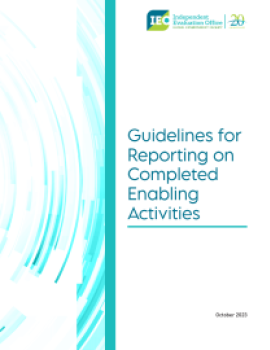An enabling activity is a project for the preparation of a plan, strategy, or report to fulfill commitments under the relevant Global Environment Facility (GEF) environmental convention. The GEF Evaluation Policy (2019) requires that GEF-financed projects be evaluated at the end of implementation. These guidelines are aimed at supporting GEF Agencies in reporting on completed enabling activities. These guidelines are the first official guidance issued by the GEF IEO on reporting on completed enabling activities. They are effective January 1, 2024.

